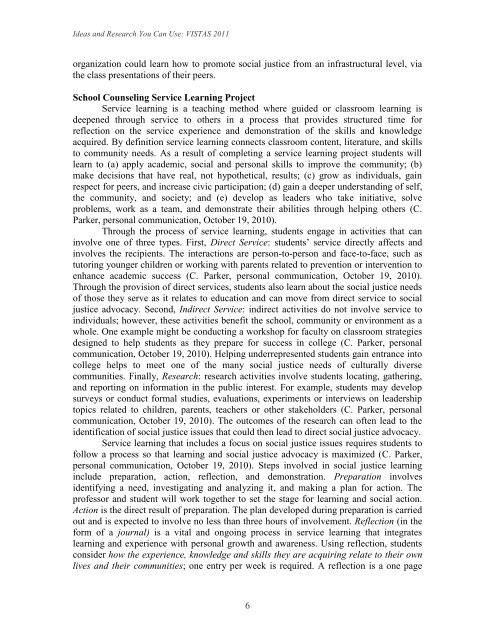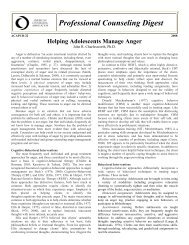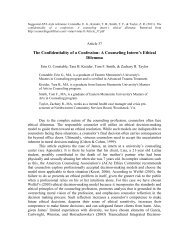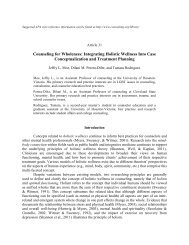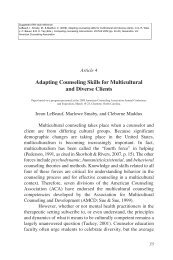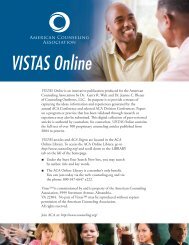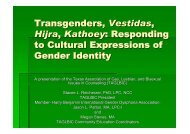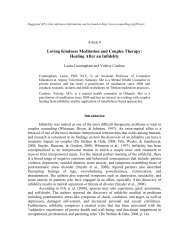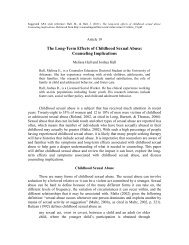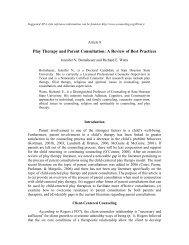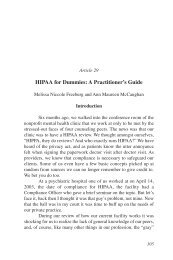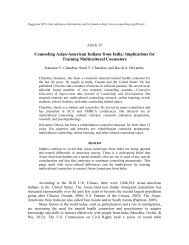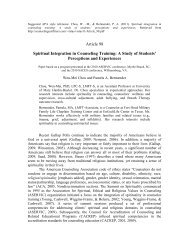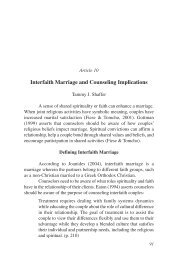Article 32. Teaching Social Justice Through Service Learning.
Article 32. Teaching Social Justice Through Service Learning.
Article 32. Teaching Social Justice Through Service Learning.
You also want an ePaper? Increase the reach of your titles
YUMPU automatically turns print PDFs into web optimized ePapers that Google loves.
Ideas and Research You Can Use: VISTAS 2011organization could learn how to promote social justice from an infrastructural level, viathe class presentations of their peers.School Counseling <strong>Service</strong> <strong>Learning</strong> Project<strong>Service</strong> learning is a teaching method where guided or classroom learning isdeepened through service to others in a process that provides structured time forreflection on the service experience and demonstration of the skills and knowledgeacquired. By definition service learning connects classroom content, literature, and skillsto community needs. As a result of completing a service learning project students willlearn to (a) apply academic, social and personal skills to improve the community; (b)make decisions that have real, not hypothetical, results; (c) grow as individuals, gainrespect for peers, and increase civic participation; (d) gain a deeper understanding of self,the community, and society; and (e) develop as leaders who take initiative, solveproblems, work as a team, and demonstrate their abilities through helping others (C.Parker, personal communication, October 19, 2010).<strong>Through</strong> the process of service learning, students engage in activities that caninvolve one of three types. First, Direct <strong>Service</strong>: students’ service directly affects andinvolves the recipients. The interactions are person-to-person and face-to-face, such astutoring younger children or working with parents related to prevention or intervention toenhance academic success (C. Parker, personal communication, October 19, 2010).<strong>Through</strong> the provision of direct services, students also learn about the social justice needsof those they serve as it relates to education and can move from direct service to socialjustice advocacy. Second, Indirect <strong>Service</strong>: indirect activities do not involve service toindividuals; however, these activities benefit the school, community or environment as awhole. One example might be conducting a workshop for faculty on classroom strategiesdesigned to help students as they prepare for success in college (C. Parker, personalcommunication, October 19, 2010). Helping underrepresented students gain entrance intocollege helps to meet one of the many social justice needs of culturally diversecommunities. Finally, Research: research activities involve students locating, gathering,and reporting on information in the public interest. For example, students may developsurveys or conduct formal studies, evaluations, experiments or interviews on leadershiptopics related to children, parents, teachers or other stakeholders (C. Parker, personalcommunication, October 19, 2010). The outcomes of the research can often lead to theidentification of social justice issues that could then lead to direct social justice advocacy.<strong>Service</strong> learning that includes a focus on social justice issues requires students tofollow a process so that learning and social justice advocacy is maximized (C. Parker,personal communication, October 19, 2010). Steps involved in social justice learninginclude preparation, action, reflection, and demonstration. Preparation involvesidentifying a need, investigating and analyzing it, and making a plan for action. Theprofessor and student will work together to set the stage for learning and social action.Action is the direct result of preparation. The plan developed during preparation is carriedout and is expected to involve no less than three hours of involvement. Reflection (in theform of a journal) is a vital and ongoing process in service learning that integrateslearning and experience with personal growth and awareness. Using reflection, studentsconsider how the experience, knowledge and skills they are acquiring relate to their ownlives and their communities; one entry per week is required. A reflection is a one page6


